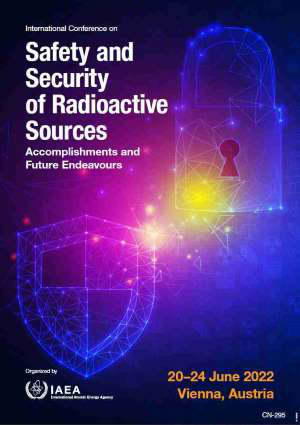Speaker
Description
The management option of Disused Sealed Radioactive Sources (DSRS) is one of the challenging issues as the growth of activities with radioactive sources is undeniable in the world. At the end-of-life cycle of a radioactive source either previously used in industrial or research applications, the resulted DSRS is vulnerable because of being nonprofitable to the end-users. Their management is foremost important to assure that safety and security measures are in place at the management facility. Usually, when DSRS becomes waste, the management options in place and internationally recommended are made of administrative controls and the implementations of technical measures in terms of “return to supplier”, borehole implementation, long-term storage, and disposal. Different studies have been carried on the safety and security of each option, especially while a certain quantity of DSRS is to be stored. The present study discusses the implementation of Monte Carlo simulation in managing the DSRS for the long-term storage option.
Monte Carlo-based Particle and Heavy Ion Transport code System (PHITS) is used to evaluating the safety measures in interim storage containing 241Am/Be and 137Cs sources. After the collection of the DSRS, Monte Carlo methods are used to simulate the effective dose rate in and around the interim storage facility. The calculations are done prior to the dismantling operations to be done on Truslers, the reassembly of all dismantled DSRS into a special P60 capsule form, and their storage into the long-term storage facility. The first computation was done on a waste drum in which the P60 special form capsule containing many disassembled 241Am/Be or 137Cs was loaded (Figure 1). The dose rate at contact and 1 m away, horizontal and vertical profiles show enough safety to plan the dismantled operation. The second computation was done for the entire long-term storage facility where several drums would be stored later, to evaluate the country storage capability based on the up-to-date inventory of the DSRS.
Figure 1. Geometry of the simulation designed for DSRSs waste management optimization and the vertical dose profile
Figure 2: Tank/drums for waste conditioning using concrete Different cross-section views for PHITS Calculations in the long-term storage facility
Reference: AIP Advances 11, 000000 (2021) https://doi.org/10.1063/5.0063005
| Country OR Intl. Organization | CAMEROON |
|---|

